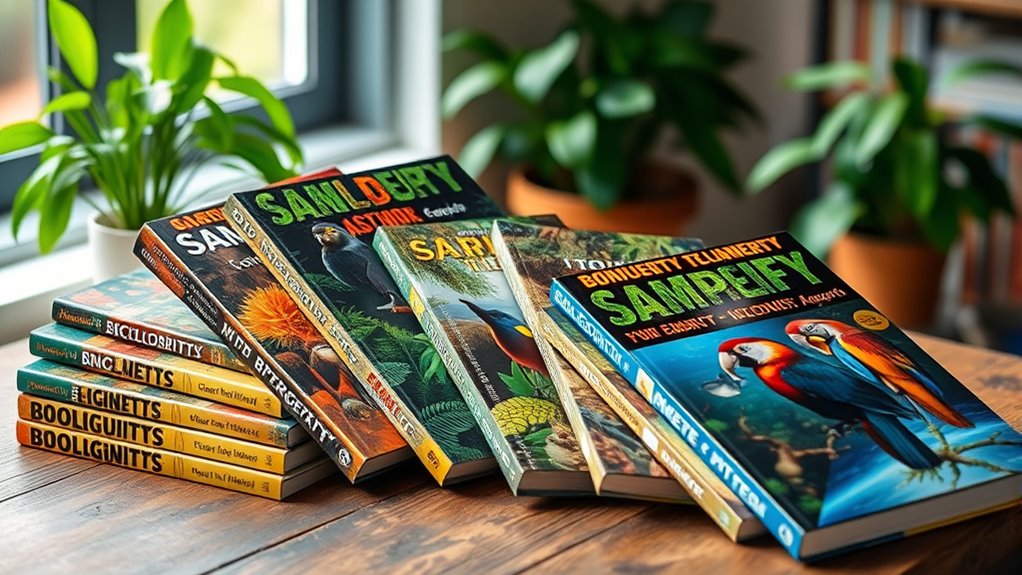If you’re looking for the top biodiversity textbooks to deepen your understanding, I recommend starting with Concepts of Biology by OpenStax for a solid foundation, along with Principles of Terrestrial Ecosystem Ecology for detailed ecosystem insights. The California Naturalist Handbook offers regional perspectives, while The Sixth Extinction highlights current crises. For taxonomy, Damselfly Identification Guide is excellent. If you’re into research, Ecological Speciation provides advanced concepts. Keep exploring to discover more resources tailored to your interests.
Key Takeaways
- Foundational textbooks like *Concepts of Biology* and *Principles of Terrestrial Ecosystem Ecology* provide essential biological and ecological concepts for students and enthusiasts.
- Regional resources such as *The California Naturalist Handbook* and *Wetland Ecology* offer in-depth knowledge of local biodiversity and habitats.
- Identification guides like the *Damselfly Identification Guide* are invaluable for learning species recognition and taxonomy.
- Books addressing biodiversity crises, including *The Sixth Extinction*, raise awareness of human impacts and conservation efforts.
- Combining scientific rigor with engaging narratives, these textbooks cater to diverse interests from beginner to advanced levels.
Habitat Suitability and Distribution Models in R
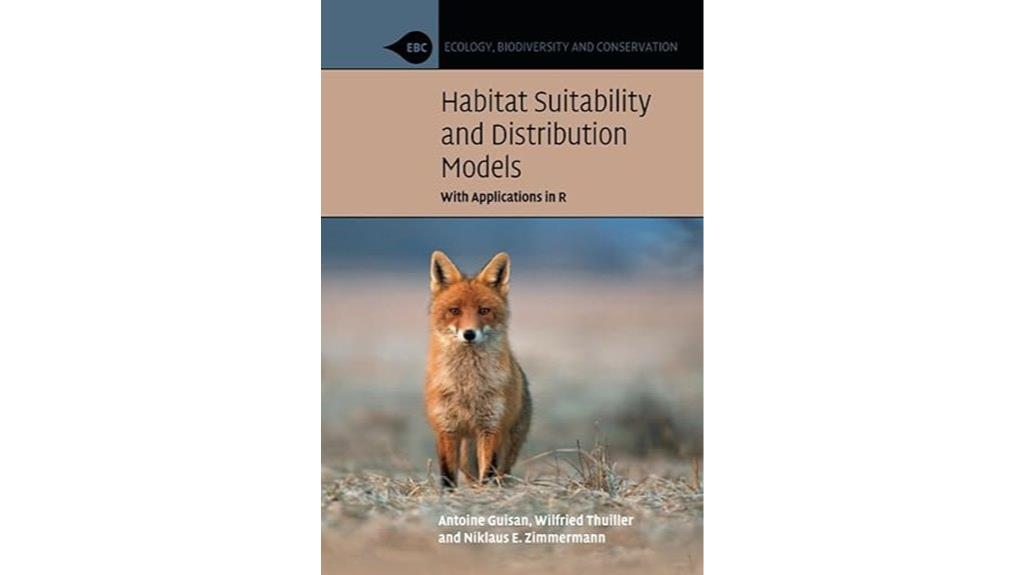
If you’re looking to get started with Species Distribution Modeling (SDM) using R, “Habitat Suitability and Distribution Models: With Applications in R” is an excellent choice, especially for students and researchers new to the field. This all-encompassing book offers a clear, accessible introduction to SDM concepts, assumptions, and methodologies. Authored by renowned scientists, it provides detailed explanations and practical R code, making implementation straightforward. The book’s readability allows you to grasp complex topics quickly, often in less than a week. While some areas could benefit from more examples, its thorough coverage and user-friendly approach make it a valuable resource for anyone interested in habitat modeling.
Best For: students and researchers new to Species Distribution Modeling seeking a clear, practical introduction with accessible R code and thorough coverage.
Pros:
- Provides detailed explanations of SDM concepts and methodologies suitable for beginners.
- Includes practical R code and online resources to facilitate hands-on learning.
- Highly readable and concise, allowing quick comprehension of complex topics.
Cons:
- Could benefit from more worked examples to illustrate methods in diverse contexts.
- Some minor grammatical errors are present, slightly affecting the reading experience.
- May lack in-depth coverage of advanced or niche SDM techniques for experienced users.
Sustaining Life: How Human Health Depends on Biodiversity
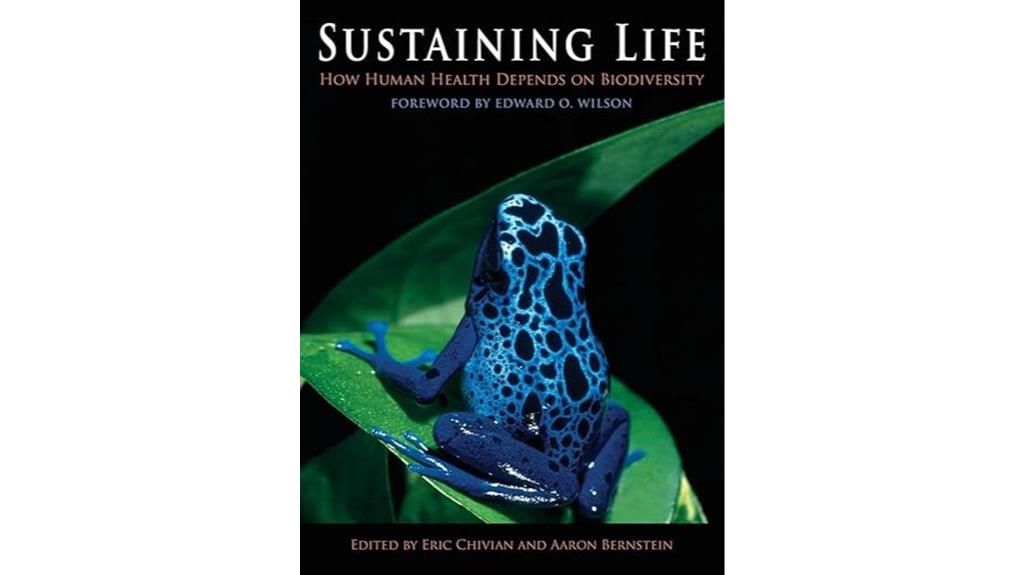
Biodiversity Textbooks is an excellent resource for anyone interested in understanding how the variety of life on Earth directly influences our health and well-being. I’ve learned that biodiversity provides essential services like clean water, air, food, medicine, and disease regulation. Loss of species can lead to more infectious diseases, and urban greenspaces improve mental health. Soil microbes and gut bacteria profoundly impact cognition and overall health. The book “Sustaining Life” highlights that healthy ecosystems build resilience against crises and emphasizes our moral responsibility to protect all species. It’s a compelling reminder that human health depends on preserving the planet’s rich biodiversity.
Best For: anyone interested in understanding the vital connection between biodiversity and human health, including students, environmentalists, and general readers seeking accessible scientific insights.
Pros:
- Well-organized and accessible language suitable for non-specialists
- Richly illustrated with diverse scientific perspectives from over 60 experts
- Emphasizes practical steps for conservation and personal responsibility
Cons:
- As the book is nearly five years old, some recent research findings may not be included
- Brief mention of overpopulation and certain issues without in-depth analysis
- Focuses primarily on the importance of biodiversity without detailed policy or economic solutions
Concepts of Biology by OpenStax (Official Print Version, paperback, B&W)
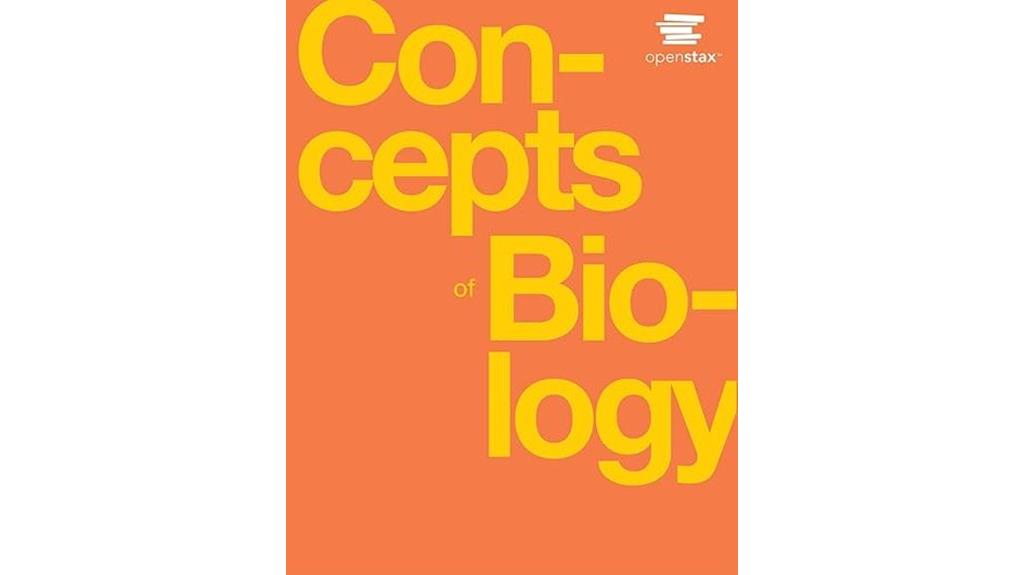
The Concepts of Biology by OpenStax stands out as an ideal choice for students seeking a reliable, affordable introduction to biology, especially those who prefer a durable, printed resource. This paperback edition offers sturdy construction, full-color illustrations, and accurate content that covers fundamental concepts like cellular structures, genetics, ecology, and evolution. Its engaging style, with lively explanations and humorous puns, makes complex topics accessible and enjoyable. The book’s extensive coverage suits both beginners and those building a solid foundation. Plus, its low cost and available online version ensure broad access, making it a valuable resource for anyone interested in biological sciences.
Best For: students seeking a reliable, durable, and visually engaging introduction to biology, especially those who prefer printed textbooks and affordable educational resources.
Pros:
- Comprehensive coverage of fundamental biological concepts with clear explanations and colorful illustrations.
- Durable hardcover and full-color print that enhances learning and is suitable for frequent use.
- Affordable price point combined with free online access broadens accessibility for diverse learners.
Cons:
- Some users may find the writing style challenging, particularly non-majors or beginners.
- Occasional issues with links or digital features in the online version.
- The black-and-white print version may lack the vividness of full-color editions, though the full-color print is available.
The Living Landscape Book

Are you a gardener enthusiastic to transform your outdoor space into a thriving, ecological haven? *The Living Landscape* by Rick Darke and Doug Tallamy is an excellent choice for anyone looking to deepen their understanding of how layered landscape design supports biodiversity and ecosystem health. The book emphasizes viewing landscapes as interconnected systems, highlighting layers like canopies, wetlands, and meadows that serve crucial ecological functions. It champions native plants and biodiversity, offering regional plant lists and practical guidance. This book encourages gardeners to see beyond aesthetics, fostering stewardship that sustains wildlife, improves ecosystem resilience, and nurtures vibrant, living landscapes.
Best For: gardeners and landscape enthusiasts seeking to create ecologically vibrant, native plant-based gardens that support biodiversity and ecosystem health.
Pros:
- Emphasizes the importance of native plants and ecological layers for biodiversity.
- Offers regional plant lists and practical insights for local adaptation.
- Combines scientific research, stunning photography, and inspiring ecological principles.
Cons:
- Lacks detailed step-by-step instructions for specific landscape projects.
- Some readers may find the passionate tone and occasional polemics overwhelming.
- Regional coverage varies, with some areas receiving more extensive guidance than others.
Principles of Terrestrial Ecosystem Ecology
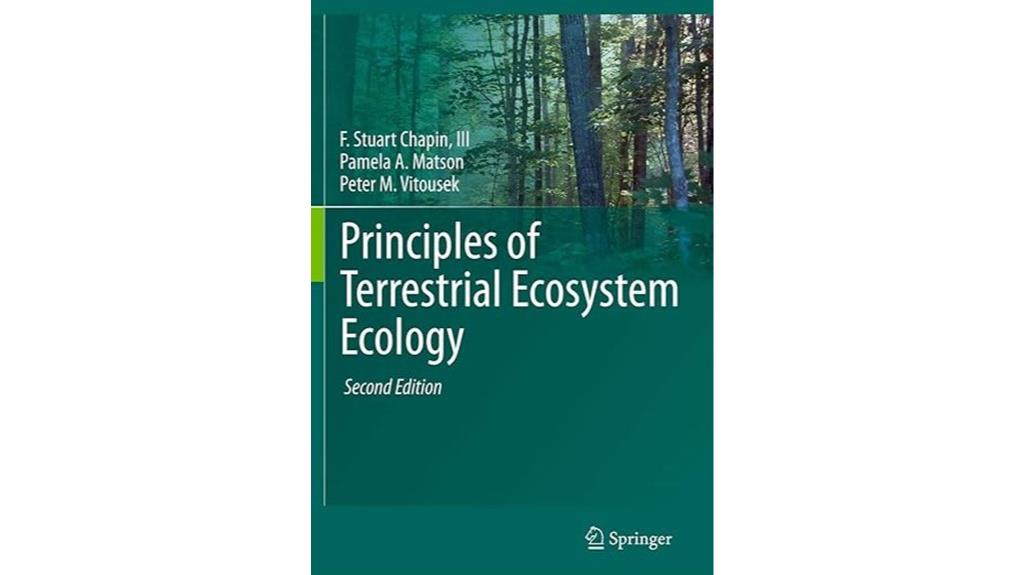
If you’re seeking an all-encompassing and accessible resource on terrestrial ecosystem ecology, this textbook stands out as an ideal choice. It offers clear, thorough insights into ecosystem interdependence, symbiotic relationships, and carbon balance, making complex concepts understandable without oversimplifying. The book’s well-organized chapters include follow-up questions to reinforce learning, perfect for students and professionals alike. Its durable, well-illustrated physical copy is valuable for study and reference. Recent updates and detailed diagrams elevate its relevance, while the balanced content makes it suitable for both undergraduate and graduate courses. Overall, it’s a highly recommended, practical resource for mastering terrestrial ecosystem principles.
Best For: students, educators, and environmental professionals seeking a comprehensive and accessible resource on terrestrial ecosystem ecology.
Pros:
- Clear, well-organized, and thorough coverage of ecosystem principles suitable for various learning levels
- Includes detailed diagrams, charts, and follow-up questions to reinforce understanding
- Up-to-date scientific insights and extensive bibliography enhance its relevance and usefulness
Cons:
- Minor printing issues and creased pages may affect physical handling
- Some users may find the level of detail dense for casual reading
- Physical copies, while durable, can be bulky and less portable
Wetlands
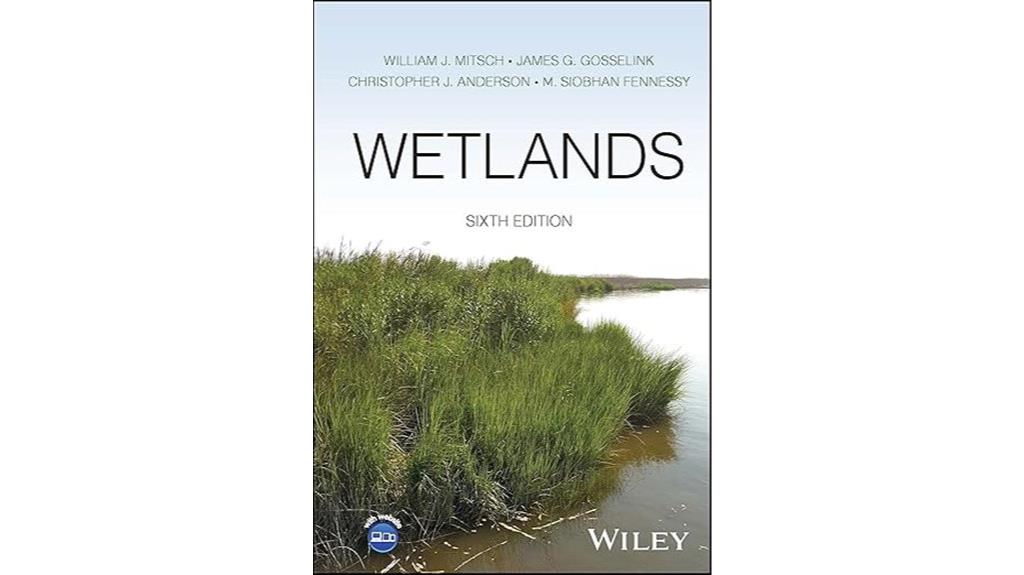
Looking for a wetlands textbook that truly stands out? This book is the best resource available, perfect for teaching about water habitats like swamps and bogs, especially those formed around Wisconsin’s glacial terminal units. It’s an excellent starting point for beginners and a classic reference for students and researchers alike. The back cover endorses it as a definitive study resource, so there’s no hesitation in recommending it. Covering various wetland types and their ecological importance, it provides detailed insights suitable for both novices and experts. This guide is an authoritative foundation in wetland studies you won’t want to miss.
Best For: Beginners, students, and researchers seeking a comprehensive and authoritative resource on wetlands and water habitat environments.
Pros:
- Highly detailed and authoritative, suitable for both novices and experts
- Covers a wide range of wetland types, including swamps and bogs
- Excellent for teaching about wetlands formed around Wisconsin’s glacial units
Cons:
- May be overwhelming for absolute beginners with limited prior knowledge
- Could be considered dense or technical for casual readers
- Limited focus on non-glacial or global wetland environments
Damselflies of the Northeast: Guide to Eastern Canada & Northeastern US Species
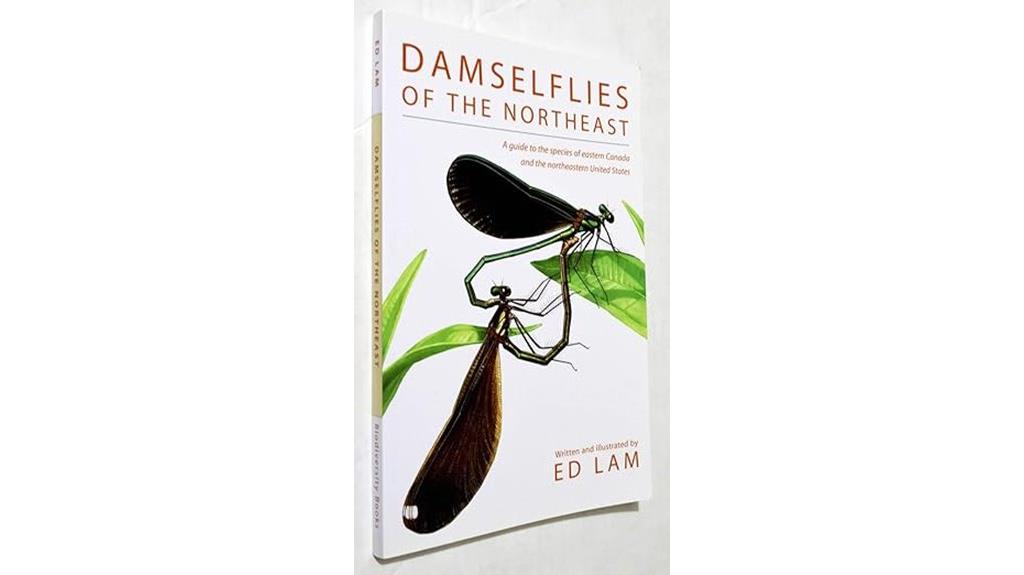
This guide, *Damselflies of the Northeast: A Guide to the Species of Eastern Canada & the Northeastern United States*, stands out as the best choice for both beginners and experienced enthusiasts due to its exceptional artwork and clear visual keys. Ed Lam’s detailed illustrations and straightforward organization make species identification easy, even for those new to damselflies. The guide covers a wide range of species within its geographic scope and highlights phenotypic variations, like bluets, to aid visual learners. Its affordability and thorough coverage have earned it a reputation as a top resource, valuable beyond just the northeastern region. It’s truly a must-have for damselfly lovers.
Best For: both novice and experienced damselfly enthusiasts seeking a highly visual, detailed, and affordable field guide for identifying species in the northeastern US and eastern Canada.
Pros:
- Exceptional artwork and clear visual keys that simplify identification.
- Detailed species descriptions and images of phenotypic variations, especially useful for tricky groups like bluets.
- User-friendly layout and organization making it accessible for beginners and experts alike.
Cons:
- Limited geographic scope primarily focused on the northeastern US and eastern Canada.
- Some users desire broader coverage, including other regions and additional odonate groups.
- The original edition is older; newer editions or companion guides are limited but in development.
The Sixth Extinction (10th Anniversary Edition): An Unnatural History
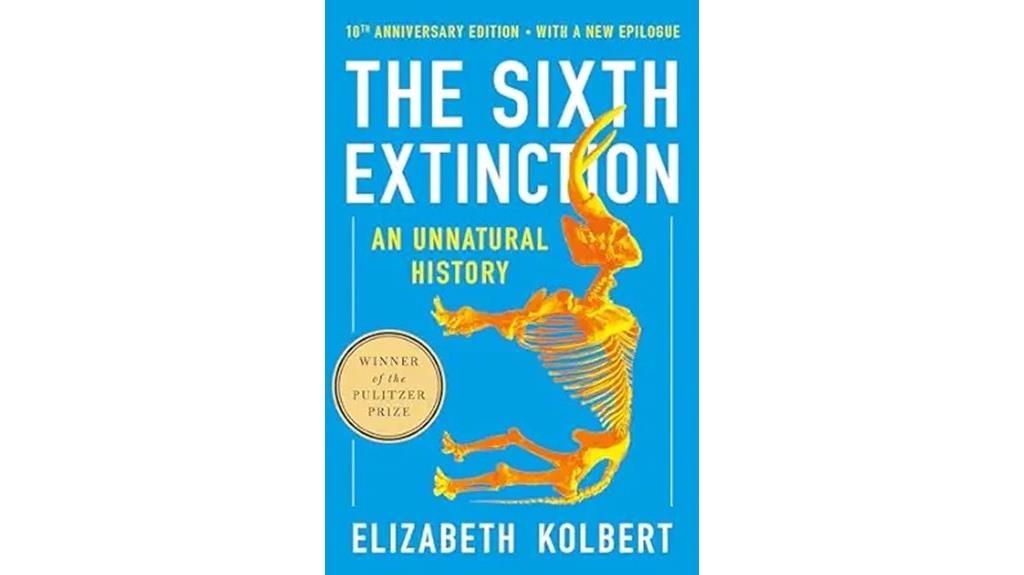
Biodiversity textbooks are essential for students and educators seeking a thorough understanding of Earth’s ongoing mass extinction, especially those interested in human impacts on the environment. Elizabeth Kolbert’s *The Sixth Extinction* vividly describes how human activities—habitat destruction, invasive species, climate change—accelerate extinction rates beyond natural levels. She highlights examples like frog die-offs from fungal infections, coral reef collapse from ocean acidification, and the near-extinction of American chestnuts. The book emphasizes that we’re living in the Anthropocene epoch, where human influence reshapes ecosystems and threatens global biodiversity. It’s a compelling reminder of our role in either safeguarding or endangering Earth’s future.
Best For: students, educators, and environmental enthusiasts seeking an in-depth understanding of Earth’s ongoing mass extinction and human impacts on biodiversity.
Pros:
- Engaging and accessible writing style that combines science, travel, and history
- Rich examples illustrating real-world consequences of human activities on ecosystems
- Emphasizes the importance of scientific awareness and cultural change for environmental preservation
Cons:
- Can be dense for readers unfamiliar with ecological or scientific terminology
- Focuses heavily on human-induced extinction, potentially overlooking natural extinction processes
- May evoke feelings of helplessness without offering specific, actionable solutions
Ecological Speciation (Oxford Series in Ecology and Evolution)

If you’re a graduate student or researcher with a background in ecology, genetics, or evolution, Nosil’s “Ecological Speciation” offers a thorough and well-organized synthesis of current research. It explores how ecological factors drive species formation, emphasizing the roles of divergent selection, reproductive isolation, and genomic mechanisms. The book integrates field, experimental, and theoretical studies, providing clear examples and illustrations. While accessible to those with basic knowledge, it’s essential for those aiming to deepen their understanding of speciation processes. Highly regarded and all-encompassing, it’s a must-read for anyone interested in the mechanisms behind biodiversity and species divergence.
Best For: graduate students and researchers in ecology, genetics, or evolution seeking a comprehensive, well-structured overview of ecological speciation.
Pros:
- Thorough and systematic synthesis of current research with extensive references
- Clear explanations supported by strong illustrations and real-world examples
- Suitable for advanced readers while remaining accessible to those with basic knowledge
Cons:
- Not ideal for complete beginners without prior background in relevant fields
- May be dense for readers seeking a quick or introductory overview
- Focuses mainly on ecological and genomic mechanisms, potentially less on other speciation models
The California Naturalist Handbook
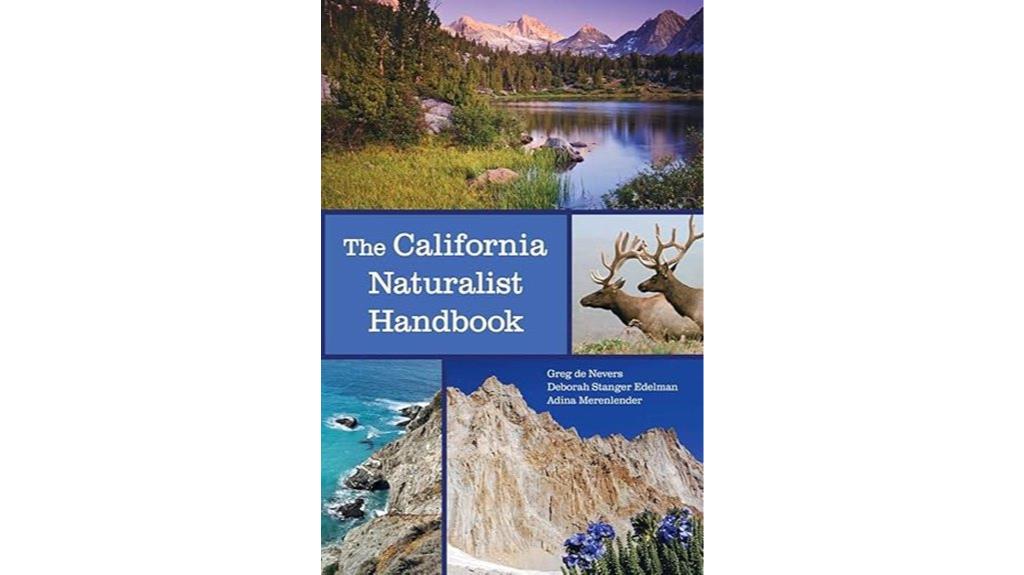
The California Naturalist Handbook stands out as an ideal resource for beginners and aspiring naturalists enthusiastic to explore California’s diverse ecosystems. I appreciate how it offers a clear overview of the state’s geology, water systems, plants, and animals, making complex natural processes accessible. The book emphasizes observation, interpretation, and journaling, which helps deepen my understanding of ecological connections. Its illustrations and factual accuracy make learning engaging and reliable. Whether for self-study or classroom use, this handbook inspires curiosity and offers practical skills to connect with California’s rich biodiversity. It’s a must-have for anyone eager to appreciate and understand California’s natural environment.
Best For: beginners and aspiring naturalists interested in exploring and understanding California’s diverse ecosystems and natural history.
Pros:
- Provides a clear, accessible overview of California’s geology, water systems, plants, and animals
- Emphasizes observation, interpretation, and journaling skills to deepen ecological understanding
- Well-illustrated and factually accurate, making learning engaging and reliable
Cons:
- May lack in-depth detail for advanced or specialized topics
- Primarily suited for beginners; less suitable for those seeking technical scientific information
- Focuses on broad concepts, which might require supplementary resources for deeper study
Factors to Consider When Choosing Biodiversity Textbooks
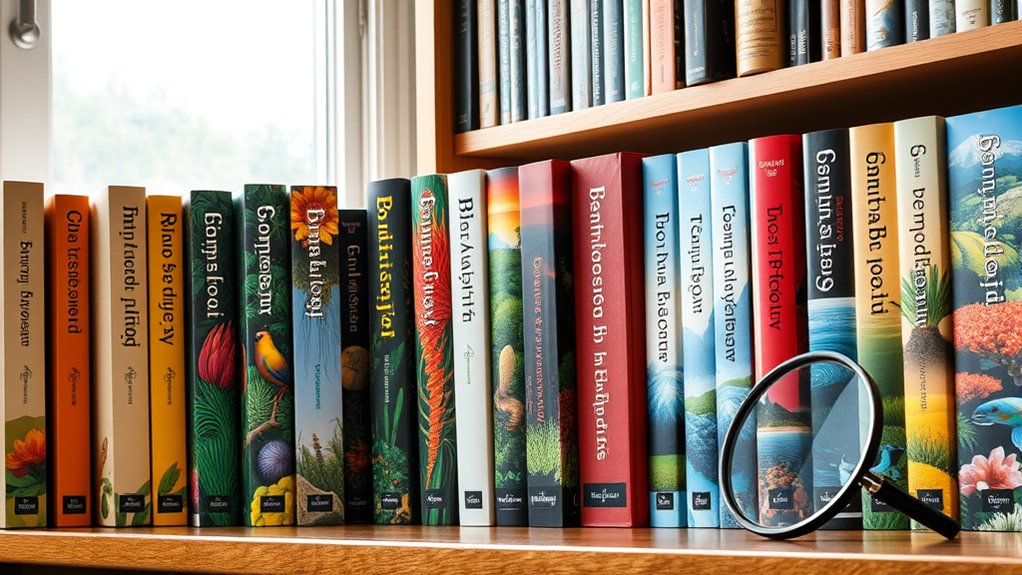
When selecting a biodiversity textbook, I focus on several key factors to guarantee it meets my needs. I consider the depth and scope of the content, how clear and engaging the visuals are, and whether the material is accessible and up-to-date. These elements help me choose a resource that’s accurate, practical, and easy to understand.
Content Depth and Scope
Choosing the right biodiversity textbook hinges on evaluating its content depth and scope to match your learning objectives. I look for a thorough overview that covers genetics, ecology, conservation, and ecosystem functions, ensuring broad coverage. I assess whether the scientific detail suits my level, from introductory concepts for beginners to advanced topics for graduate studies. It’s important that the scope includes both terrestrial and aquatic ecosystems, along with human impacts and conservation strategies, aligning with my specific interests. I also check if the book balances theory with practical examples, case studies, and regional or global perspectives to enhance understanding. Finally, I verify that the content reflects current research, technological advances, and emerging issues, so I stay relevant in this rapidly evolving field.
Visual and Illustrative Quality
High-quality biodiversity textbooks rely on clear, detailed illustrations and photographs that make complex ecological concepts easier to grasp. Accurate visuals of species, habitats, and ecological processes support effective learning by providing a visual context that words alone can’t always convey. Well-designed diagrams, charts, and infographics help explain data, relationships, and patterns, making intricate ideas more accessible. The use of color, contrast, and precise labeling enhances readability and highlights key features or differences among species, aiding retention. Visually engaging textbooks not only clarify abstract or complex topics but also boost interest and motivation to learn. When choosing a textbook, look for those with high-quality visuals, as they markedly improve comprehension and make studying biodiversity a more immersive experience.
Accessibility and Readability
How easy is it for you to understand a biodiversity textbook often depends on how clearly it’s written and organized. A good textbook uses straightforward language that anyone with a basic science background can grasp. Well-structured chapters, clear headings, and summaries make navigation simple, helping you find information quickly. Avoiding excessive jargon and technical complexity makes the material more approachable. Visual aids like diagrams, photos, and tables clarify difficult concepts and keep you engaged. An engaging, conversational writing style can also boost understanding and make learning more enjoyable, especially for non-specialists. Ultimately, a textbook that’s accessible and readable supports effective learning by breaking down complex ideas into manageable, comprehensible parts.
Scientific Accuracy and Currency
Staying current with the latest scientific research is essential when selecting a biodiversity textbook, as the field is constantly evolving. I look for textbooks that reference recent studies published within the last 3-5 years, ensuring the material reflects the latest discoveries and theories. It’s important that the content aligns with updates from authoritative organizations like the IPBES and IUCN, which lend credibility and accuracy. I also verify that the book includes current global biodiversity statistics, such as recent extinction rates and success stories, to provide an up-to-date perspective. Additionally, I prefer texts that discuss technological advances like genomics and remote sensing, which are transforming biodiversity research. Finally, I check the publication date and edition to confirm the material covers the most recent developments and avoids outdated information.
Practical Application and Tools
When selecting a biodiversity textbook, it’s important to contemplate whether it offers practical tools that help translate theory into action. I look for resources that include regional plant lists, identification keys, or ecological layering guides, as these are essential for real-world application. Case studies, field exercises, and hands-on activities make complex concepts tangible and foster active learning. Visual aids like detailed illustrations, photographs, and diagrams clarify intricate ecological interactions and species identification. Up-to-date supplementary resources such as online databases or interactive modules are invaluable for ongoing learning and fieldwork integration. Finally, clear instructions and frameworks for applying ecological principles—whether in landscape design, conservation, or habitat management—are *fundamental* to turn knowledge into effective practice.
Frequently Asked Questions
Which Biodiversity Textbooks Are Best for Beginners?
If you’re starting out, I recommend “Biodiversity” by Edward O. Wilson because it’s clear and engaging. “Essentials of Biodiversity” by Richard B. Primack is also great for beginners, offering straightforward explanations. Both books simplify complex ideas, making them perfect for newcomers. I found these texts accessible and informative, helping me build a solid foundation in biodiversity concepts without feeling overwhelmed.
How Often Should I Update My Biodiversity Textbook Collection?
I believe you should update your biodiversity textbook collection every 3 to 5 years. Science evolves rapidly, and new discoveries or conservation strategies emerge regularly. Staying current helps me understand the latest trends and data, which is essential for both my studies and passion. Plus, newer editions often include updated images, case studies, and references that enrich my knowledge and keep me engaged with the latest developments.
Are There Textbooks Focusing on Regional Biodiversity Issues?
Yes, there are excellent textbooks focusing on regional biodiversity issues. I recommend exploring books tailored to specific areas, like “Biodiversity and Conservation of the Western Ghats” or regional compilations for ecosystems like the Amazon or the Great Barrier Reef. These books dive deep into local species, threats, and conservation strategies, helping you understand regional challenges better. They’re invaluable for students, researchers, or enthusiasts interested in localized biodiversity issues.
What Are the Latest Advancements Covered in Recent Biodiversity Books?
Recent biodiversity books cover exciting advancements like gene editing techniques, which help protect endangered species, and remote sensing tools that monitor ecosystems more efficiently. They also explore climate change impacts, highlighting adaptive strategies to sustain biodiversity. I find these developments fascinating because they demonstrate how science is actively working to conserve our planet’s rich variety of life. Staying updated on these topics inspires me to support conservation efforts and appreciate biodiversity even more.
Can Textbooks Include Practical Fieldwork Guidance?
Absolutely, textbooks can include practical fieldwork guidance—think of them as treasure maps guiding you through biodiversity’s hidden gems. Many modern books now incorporate detailed instructions on sample collection, observation techniques, and data recording. I find this integration invaluable because it transforms theory into action, making learning tangible. With clear, step-by-step guidance, these textbooks truly become your trusted companions on your biodiversity exploration journey.
Conclusion
So, after all this, who knew that understanding biodiversity might just be as simple as flipping through a textbook? Maybe the real extinction isn’t in the wild, but in our library shelves. But don’t worry—these books are here to save the day, one page at a time. Because if we’re gonna save the planet, we might as well start by knowing it. Happy reading!
